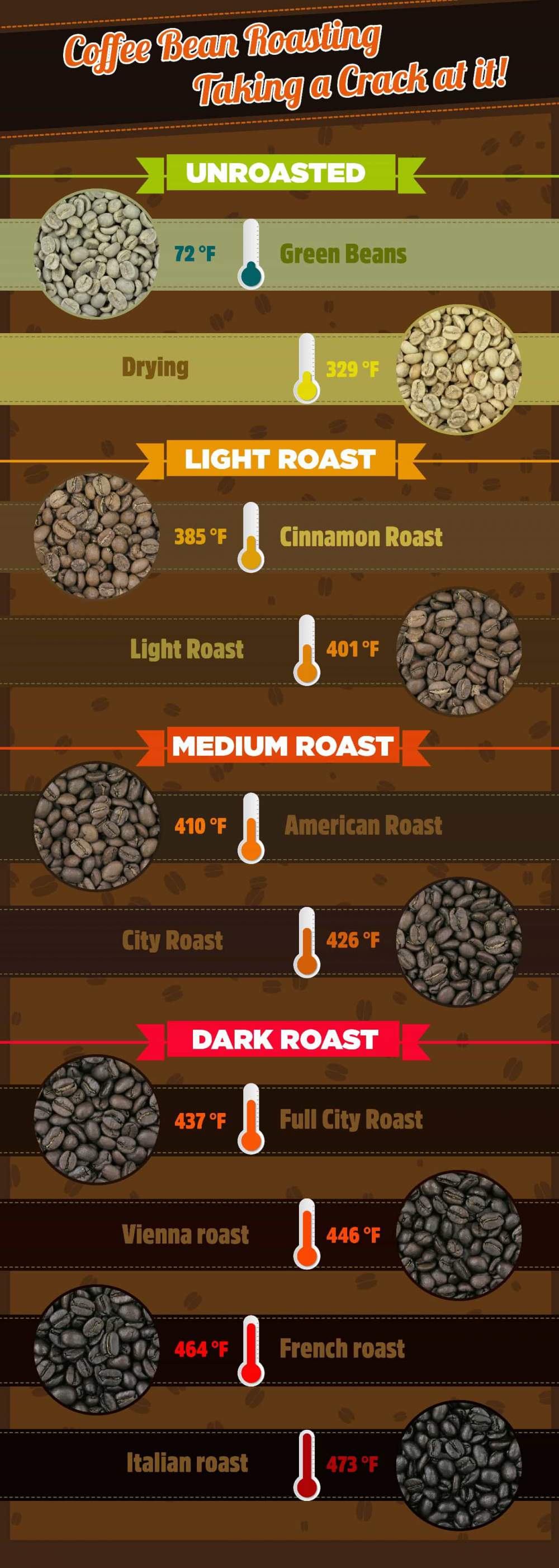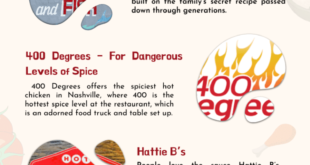What are the different degrees of Coffee Bean Roast?
Here is a short list:
- Unroasted
- Drying
- Cinnamon
- Light
- American
- City
- City+
- Full City
- Vienna
- French
- Italian
What Each Roast Means
Unroasted Coffee Beans
Coffee beans in their natural just picked state are considered Unroasted. This means that the beans have been shipped from the farmer to your door without exposure to flames. During the trip, they are likely to be exposed to an average of about 72 °F during their trip.
Drying Roast
There are various types of harvesting that occur at the coffee bean plantations. One form uses wet processing where the coffee beans are soak for a day or two to soften the husk that surrounds the coffee beans. To speed up the process, some manufacturers employ a Drying stage where they put the coffee beans under a low fire for a period of time at 329 °F. The idea is that all of the moisture is removed. This Drying period is typically stopped well before first crack.
Cinnamon Roast
You may see Light Roast on various coffee bean packages. A Cinnamon roast would be considered on the lighter side of your typical Light roast. With temperatures of 385 °F, this roast is typically performed right up until first crack. A Cinnamon roast’s light touch leaves the batch of coffee beans with pretty much all of its natural flavors and aroma.
Light Roast
Your generic Light roast occurs at 401 °F and creates cups of coffee that get the description of bright and bold. This typically means a more acidic cup. But, if your stomach can handle it, these are the beans that provide a taste that is most like the origin coffee bean.
American roast
At the lower roast spectrum of Medium roasting is the American roast, boasting a flame around 410 °F held until after first crack. With lower acidity than your Light roasts, the American is easier on the stomach while the coffee beans characteristics are for the most part maintained.
City roast
City or Medium roast is one of the more popular roasts. With a full first crack roast at 426 °F, this roast provides a nice balance between keeping the coffee bean complexity, lowering acidity enough, maintaining body, and not too much roast (some think too much roast equates to burnt). Lumped into this group, City+ cooks a little over first crack at 435 °F.
Full City roast
This is the first shade of Dark roasting (437 °F). As second crack begins, oils are released and can start caramelizing. At this point, the roasting flavor begins to overtake the coffee bean flavor. This is the degree of Dark roast that maintains the most characteristics of the original coffee bean.
Vienna roast
As we venture into the Dark roast a little more, the releasing of the coffee bean oils becomes much clearer. Various degrees of roast allow the oils to caramelize. In the Dark roast band of roasting, acidity fades away. The Vienna roast is the lower range of Dark roasting at 446 °F.
French roast
At a scorching 464 °F, the French roast almost obliterates the original characteristics of the coffee bean being roasted. The benefits are very low acidity. On the subjective side is the benefit of the roast flavor. Many find it the only way to drink their cup of joe. Others find a French roast just too burnt to the taste.
Italian roast
Go Italian if your want as low acidity as possible. The taste will have a distinctive burnt flavor and aroma. And, the body of the resulting cup of coffee becomes much thinner. The burnt tastes dominates a cup of Italian as the coffee bean flavors are cooked away during a roast up to 473 °F.
Coffee Bean Roasting Infographic

Infographic Source: http://www.thecoffeebeanmenu.com/
 Infographic Portal New Infographics Resource Portal
Infographic Portal New Infographics Resource Portal
